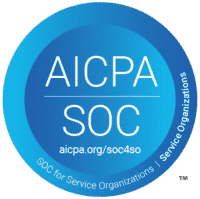‘De Staat van het Onderwijs‘ provides an annual picture of the state of education in the Netherlands. The 2022 report lists as one of the social tasks of education: ‘Every pupil and student succeeds in further education and on the labor market.’ An important task to which student-owned learning, with the help of a portfolio can contribute. But how do you integrate working with a portfolio into an existing learning vision or methodology? In this article we challenge you with 5 questions to investigate this within your educational institution.
A student-owned portfolio strategy
A student-owned portfolio encourages students to take ownership of their own learning. The portfolio strategy is how you use the portfolio in education. It is important here that the portfolio has a clear didactic function and is part of education. As a stand-alone form of work, it misses its purpose (for the most part). What the portfolio strategy looks like depends on the learning vision or methodology of the educational institution.
Methodologies: from traditional to student-owned and everything in between
There are different methodologies in learning. At one end of the spectrum you’ll find traditional learning, which is primarily teacher-driven. At the other end, you’ll find “open learning,” which is completely student-owned (Hoogeveen & Winkels, 2018).
It goes without saying that a student-owned portfolio can be well integrated into a methodology where student-owned learning plays a major role. Examples of such methodologies are:
- Competency based learning
- Problem-based learning
- Challenge-based learning
- Reflective learning
With previous methodologies, the use of a student-owned portfolio is almost indispensable. You can choose to switch to one of these methods, but that is not necessary. There are also opportunities to use a portfolio within ‘traditional’ methodologies. The deployment and didactic function of the portfolio will simply look different.
Five questions to start your investigation
It does not fit in this article to explain every situation and bring in the right nuance. That is why below you will find 5 questions to explore within your educational institution what portfolio strategy will suit you.
- Why do you want a student-owned portfolio?
- What do you need to make this a reality?
- What are potential obstacles and how will you deal with them?
- Where can you start small?
- How can you expand it?
Question 1. Why do you want a student-owned portfolio?
This question revolves around an analysis of the current methodology and your expectations of using a portfolio. The following questions may help you:
- What methodology do you currently use and are you satisfied with it?
- Where and why do you want to add to it or change it?
- To what extent do you have room to change?
- Why do you want to use a portfolio?
- What didactic function do you want to give the portfolio?
The curricular spider web of van den Akker (2003) is a useful tool to structure these questions. The different components of a curriculum are shown in the core and the nine threads of the spider web. In addition, you can see the different levels at which curriculum agreements are established.
By looking at each component and level, you analyze in a structured way where you want to make gains. In doing so, set concrete goals. These goals not only form the basis for determining exactly what you need, but will also help you evaluate and determine next steps. Include in this analysis how you expect a portfolio to help you achieve those goals.






